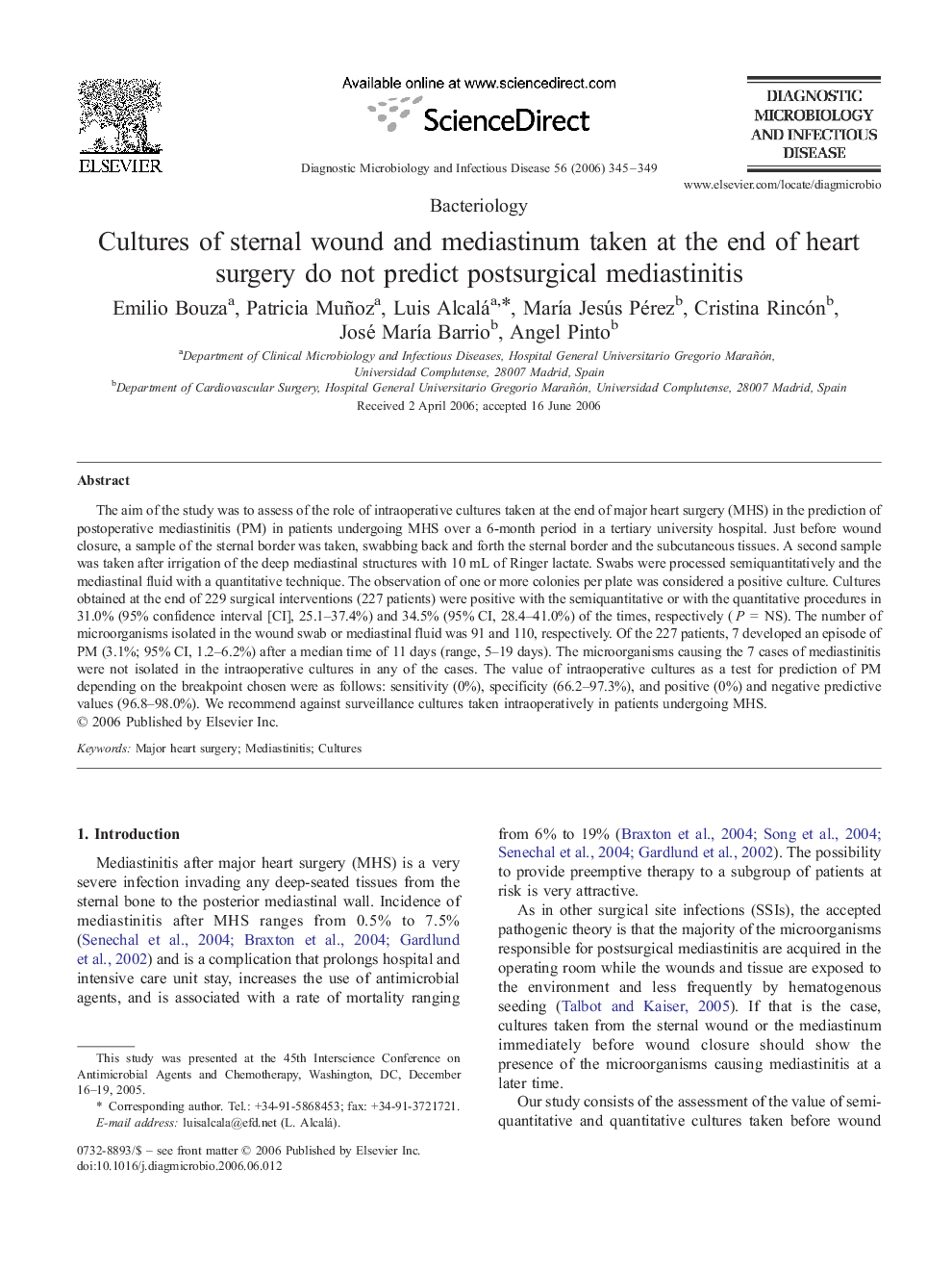| Article ID | Journal | Published Year | Pages | File Type |
|---|---|---|---|---|
| 3348344 | Diagnostic Microbiology and Infectious Disease | 2006 | 5 Pages |
The aim of the study was to assess of the role of intraoperative cultures taken at the end of major heart surgery (MHS) in the prediction of postoperative mediastinitis (PM) in patients undergoing MHS over a 6-month period in a tertiary university hospital. Just before wound closure, a sample of the sternal border was taken, swabbing back and forth the sternal border and the subcutaneous tissues. A second sample was taken after irrigation of the deep mediastinal structures with 10 mL of Ringer lactate. Swabs were processed semiquantitatively and the mediastinal fluid with a quantitative technique. The observation of one or more colonies per plate was considered a positive culture. Cultures obtained at the end of 229 surgical interventions (227 patients) were positive with the semiquantitative or with the quantitative procedures in 31.0% (95% confidence interval [CI], 25.1–37.4%) and 34.5% (95% CI, 28.4–41.0%) of the times, respectively (P = NS). The number of microorganisms isolated in the wound swab or mediastinal fluid was 91 and 110, respectively. Of the 227 patients, 7 developed an episode of PM (3.1%; 95% CI, 1.2–6.2%) after a median time of 11 days (range, 5–19 days). The microorganisms causing the 7 cases of mediastinitis were not isolated in the intraoperative cultures in any of the cases. The value of intraoperative cultures as a test for prediction of PM depending on the breakpoint chosen were as follows: sensitivity (0%), specificity (66.2–97.3%), and positive (0%) and negative predictive values (96.8–98.0%). We recommend against surveillance cultures taken intraoperatively in patients undergoing MHS.
